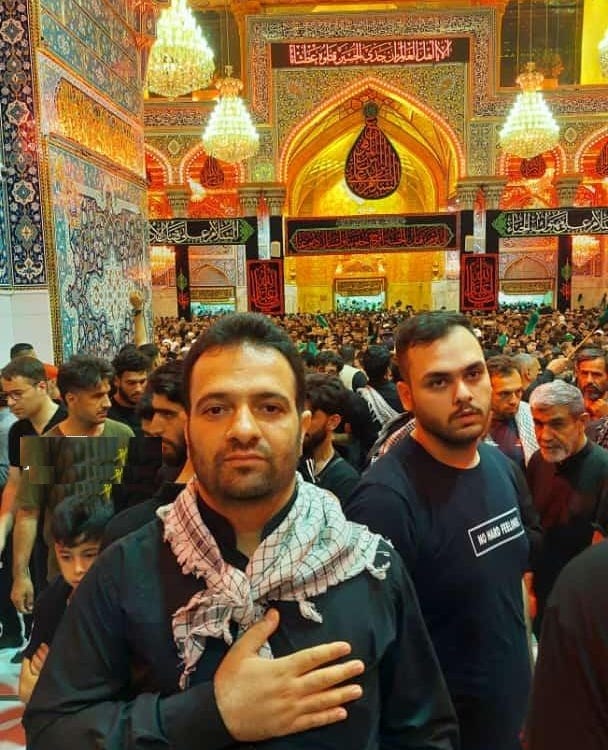Blood on the Bench: The Cruel Machinery of Iran’s Judiciary and the Assassination of Judge Ehsan Bagheri
The Iranian judiciary, long condemned by human rights organizations for its cruelty and theocratic authoritarianism, once again finds itself at the center of violence—this time not as the propagator, but as the target. On a Tuesday morning in Shiraz, capital of Iran’s Fars province, Judge Ehsan Bagheri, chief of Branch 102 of Criminal Court Two, was assassinated by two unknown assailants while en route to work.
According to Mizan Online, the judiciary’s official news outlet, Bagheri was “martyred” in what they described as a terrorist attack. The assailants escaped and remain at large, with no clear motive yet established. Bagheri, 38, had spent over a decade working as a prosecutor and investigator in Iran’s notorious Revolutionary Courts—institutions widely regarded as the Islamic Republic's instruments of repression. His death triggered a special investigation ordered by Chief Justice Gholam Hossein Mohseni-Ejei.
However, Bagheri’s killing is not an isolated incident. Only months earlier, a rare assault inside Iran’s Supreme Court took the lives of veteran judges Ali Razini and Mohammad Moghisseh — both of whom were infamous for overseeing high-profile “national security” cases that often resulted in death sentences or prolonged imprisonment for political dissenters. In that attack, the gunman reportedly took his own life after executing what the judiciary called a “planned act of assassination.”
This violence reflects growing tensions within Iran, where a regime that rules through fear increasingly finds itself living in fear—even in fear of its own. And no institution symbolizes that fear more than the judiciary.
A Theocracy in Robes
Iran’s judicial system is anything but impartial. It functions as an extension of the Supreme Leader’s authority, blending Islamic Sharia law with authoritarian mandates. Judges are often clerics or ideologically loyal appointees, many with little to no formal legal training beyond religious seminary credentials. The most notorious are posted to the Revolutionary Courts, established after the 1979 Islamic Revolution to prosecute “enemies of the state.” In practice, they have become death chambers for political prisoners, religious minorities, dissidents, LGBTQ+ individuals, and even artists.
These courts operate with impunity—trials are secretive, verdicts can be handed down in minutes, and defense attorneys are routinely denied access to their clients or the evidence against them. Many proceedings rely heavily on confessions obtained through torture.
Iran’s Industrial Use of Execution
Iran remains one of the world’s leading executioners. In 2023 alone, over 800 people were executed, many of them for non-violent crimes. Drug offenses, for example, continue to carry capital punishment, despite prior reforms intended to reduce such sentences. But it is the regime’s use of religiously charged charges such as “waging war against God” (moharebeh) or “corruption on Earth” (efsad-e fel-arz) that has sparked international outrage.
These broadly defined crimes are used to criminalize peaceful protest, free expression, or ethnic and religious identity. Following the Mahsa Amini protests in 2022–2023, dozens of demonstrators—many in their teens—were sentenced to death and hanged in public. Minorities such as Kurds, Baluchis, Bahá'ís, and Sunnis are disproportionately targeted, further revealing the sectarian nature of judicial brutality.
The Faces Behind the Gallows
Iran’s judiciary has cultivated a cadre of “celebrity judges” known not for legal scholarship, but for the swiftness and severity of their punishments.
Judge Abolghasem Salavati, dubbed “the hanging judge,” has presided over hundreds of political trials, meting out death sentences and lengthy prison terms with chilling indifference. He has been sanctioned by both the European Union and the United States.
Judge Mohammad Moghisseh, killed in January, was similarly known for basing verdicts on forced confessions extracted under duress. His legacy includes the destruction of countless lives on charges as vague as “insulting the sacred” or “spreading propaganda.”
Their deaths have sparked speculation: was this vigilante justice from grieving families? Was it part of internal regime tensions? The authorities offer no answers.
Torture, Show Trials, and Legal Farce
Human rights groups, such as Amnesty International and Human Rights Watch, have documented the widespread use of torture; which ranges from beatings and electrocution to sexual abuse and prolonged solitary confinement. Confessions extracted under such conditions are often aired on state television, creating a public spectacle long before any formal sentence is declared.
The judges, rather than questioning these coerced statements, often use them as the sole basis for conviction.
A Judiciary in Violation of International Law
Iran is a signatory to the International Covenant on Civil and Political Rights (ICCPR), which explicitly forbids arbitrary detention, torture, and executions without due process. Yet it violates nearly every clause of the covenant. Trials lack transparency, access to counsel is restricted, and appeals are perfunctory. There is no mechanism for accountability, and the few lawyers who speak out—like Nasrin Sotoudeh—are themselves imprisoned. The Islamic Republic has repeatedly claimed it does not need to uphold norms in compliance with the ICCPR because such norms "are in conflict with the Shari'a."
The Blood Backfires
Ironically, the very culture of cruelty Iran’s judiciary has nurtured may be recoiling upon itself. Judge Bagheri’s assassination, following closely on the heels of earlier attacks, suggests a rising level of desperation and rage among a populace that has lost faith in legal redress. That the killers’ motives are still unknown is telling—it could have been a political act, a personal vendetta, or a form of public vengeance for injustices carried out from the bench.
The blood that once dripped from the gallows now stains the robes of the judges themselves.
As Iran’s Islamic regime grows more repressive, the backlash is becoming less predictable. The judiciary—long the steel-tipped spear of the Islamic Republic—may now be experiencing the first cuts of a double-edged blade.





